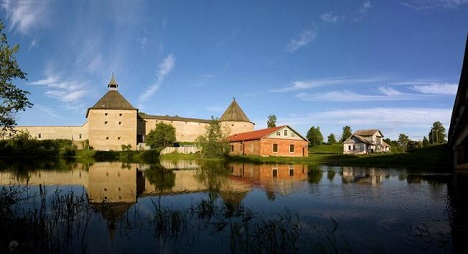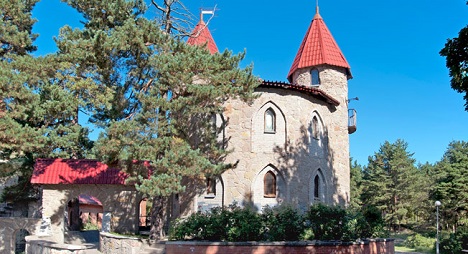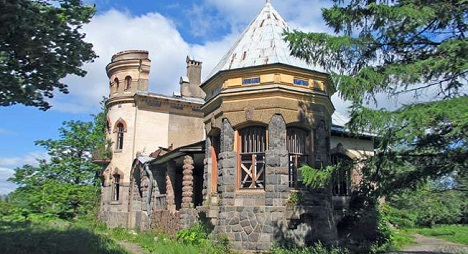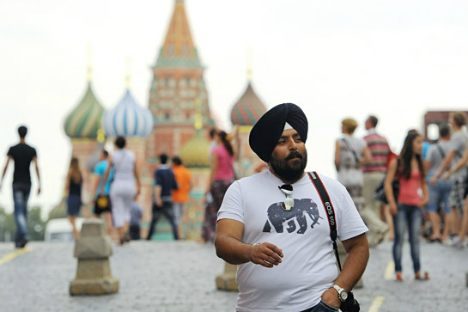Castles and estates in the Leningrad region

Korela Fortress. Source: Lori Images / Legion Media
Korela Fortress (Priozersk)
It is believed that the Korela Fortress was constructed in the 12th century, but no one truly knows when it was finished or who built it. The Korel tribes once lived here, after whom the fortress was named. The Swedes captured it repeatedly, and in 1721 Kexholm (the Swedish name for the fortress) was transferred to Russian rule. Now near the fortress there is an interesting museum that tells its history. Visitors can also stroll about the fortress grounds, visit the Round Tower, look at tanks and artillery pieces from the Second World War, and, for an additional fee, fire a cannon.
Directions: Take the commuter rail from Finlandsky railway station to Priosersk station (travel time 2 hours 30 minutes), and then take bus number 1 to the sanatoriy stop (travel time 5 minutes).
Staraya Lagoda Fortress (Staraya Lagoda)
Staraya Lagoda, an ancient village located in the Leningrad region, was once one of the ten largest cities in Russia. It was from here that the Russian land “sprung forth.” The village itself still exudes antiquity to this day: pilgrims slowly traverse up the Malyshev mountain, a boatman ferries villagers across the Volkhov river, the remains of heroes of the past rest in ancient burial mounds that seem to protect a holy land. Varyazhskaya Street probably still remembers the footsteps of the ancient Scandinavians. From here soldiers marched to battle with the Swedes during the time of Alexander Nevsky, as well as during the Great Troubles and the Northern War.

Staraya Lagoda Fortress. Source: Lori Images / Legion Media
In Staraya Lagoda an ancient fortress stands on the high and steep bank of the Volkhov with several other old churches beyond it. In addition to this, there is a holy spring beside the Church of John the Baptist, and quite nearby you can find the Staray Lagoda grottoes. You can enter the grottoes on the lower slopes of the Malyshevoy Mountains.
Directions: travel by commuter rail from Moskovsky station to the Volkhovtroy station (1 hour 50 minutes travel time), and then take bus number 23a to Staraya Lagoda (15 minutes travel time).
Andersengrad (Sosnoviy Bor)
The mini city of Andersengrad is a place where fairy tales come to life. Erected in 1980, Andersengrad is a miniature replica of a European town from the 16th-19th centuries. Visiting the town is an excellent way to spend a day off with the children or even with a group of friends. This magical city built in a medieval European architectural style includes a miniature castle with turrets, ramparts, fountains, and red walls, as well as a wide variety of the famous storyteller Hans Christian Andersen’s heroes for inhabitants. At the entrance to the town you will be met by The Little Mermaid, and within the town itself you can see the tower of tin soldiers, Ole Lukøje’s house, and other buildings that are in one way or another connected to the writer’s fabulous world.

Andersengrad. Source: Lori Images / Legion Media
Directions: travel by commuter rail from Baltiysky railway station to Kalishche station (1 hour 40 minutes travel time), and then take bus number 5 (15 minutes travel time).
Vladimir Nabokov’s family estate (village of Rozhdestveno)
The estate in the Rozhdestveno lies on a hill at the village’s centre. This estate is associated with Vladimir Nabokov- his mother, born Rukavishnikova, grew up there. The estate changed many hands prior to falling into the possession of the Rukavishnikov family. In 1916, the house in Rozhdestveno went to the future famous writer Vladimir Vladimirovich Nabokov, but in 1917 the revolution forced the Nabokov family to flee Russia. After their departure, the building was nationalized.

Museum-Estate “Rozhdestveno”. Source: Lori Images / Legion Media
Directions: travel by commuter rail from the Baltiysky railway station to Siverskaya (1 hour and 20 minutes travel time), and then take bus number 500 to the village of Rozhdestveno (20 minutes travel time).
Estate of Eliseyev the Merchant (Belogorka village)
Anyone who has been at least once to St. Petersburg has certainly peered into the city’s oldest food store on Nevsky Prospect that once belonged to a famous merchant named Eliseyev. However, few people know that the famous entrepreneur also had a magnificent manor house near St. Petersburg in the village of Belogorka. The house was built at the beginning of the 20th century in the National Romantic style (a form of Art Nouveau) and designed by renowned architect Vladimir Tavlinov. Eliseyev himself did not initiate the construction project, nor did he manage it–his daughter Elizabeth oversaw the construction. After settling in Belogorka with her second husband (the family doctor of the Eliseyevs), she had to rebuild the manor anew, after which she constantly improved it to the end of her days.

The estate of Eliseyev the merchant. Source: Veronika Prokhorova
Directions: travel by commuter rail from the Baltiysky railway station to Siverskaya station (1 hour 20 minutes travel time), and then Belogorka can be reached by taking bus number either 2, 2-Э, or 506 (5 minutes travel time).
Marino Manor (Andrianov Village)
The manor complex of the Stroganoff-Golitsyn family is considered to be one of the most magnificent of 19th century Russia. Sophia Stroganoff was personally involved in the interior decoration of the building: the ceilings were painted with grisaille, and the decorations were composed of sculptures, paintings, and bronze ware from the family home on Nevsky Prospect. This is how paintings by Italian, Spanish, and Dutch masters of the 17th century turned up in these remote and rural parts.

Marino Manor. Source: Lori Images / Legion Media
Directions: take the commuter rail from Moskovsky railway station to Tosno station (travel time 50 minutes), and then take bus number 326 to the village of Adrianov (travel time 10 minutes).
All rights reserved by Rossiyskaya Gazeta.
Subscribe
to our newsletter!
Get the week's best stories straight to your inbox
